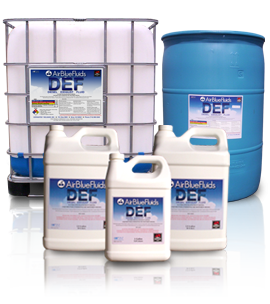Frequently Asked Questions
What are the 2010 EPA Emission Standards?
-Standards requiring greater vehicle fuel economy and a 90% cut in nitrogen oxide (NOx) emissions.
-No heavy-duty diesel engine can emit NOx levels greater than .2 g/bhp-hr (grams per brake, horsepower per hour).
-These new standards take effect in 2010 for Class 8 heavy-duty commercial trucks.
What is Selective Catalytic Reduction?
Selective Catalytic Reduction (SCR) is one of the most cost-effective and fuel -efficient vehicle emissions control technologies available to reduce diesel engine emissions. SCR technology has been proven globally for a number of years in some of the harshest climates and industries including trucking, marine and stationary power applications
How does DEF work within an SCR system?
-DEF treats exhaust gas downstream of the engine.
-Small quantities of DEF are injected into the exhaust stream.
-When mixed with the NOx, changes into harmless nitrogen and water.
Should I be concerned about handling DEF?
No! DEF is a non-toxic, non polluting, and non-flammable substance. DEF is safe to handle and store and poses no serious risk to humans, animals, equipment, or the environment when handled properly.
Does DEF freeze?
Yes! DEF will begin to freeze at 11 degrees Fahrenheit. The SCR system is designed to provide heating for the tank and supply lines which will reduce the melting time for frozen DEF.
How many miles will a tank of DEF last?
-Estimated usage rate is approximately 2% – 4% per gallon of fuel.
-50:1 Ratio 50 gallons of diesel fuel used per every 1 gallon of DEF.
-Example: If a truck averages 6 mpg, it can run 6,000 miles on a 20 gallon tank of DEF.
Diesel Exhaust Fluid Properties
-Non toxic, non-polluting and non-flammable.
-Stable and colorless.
-Will powder and cake if left out to dry.
Other advantages of SCR in addition to safeguarding public and environmental health are…
-Increased fuel economy estimated up to 5%.
-SCR technology allows for greater NOx conversion efficiency, thereby allowing the engine to be fully optimized.
-Efficient power and torque production over a long life.
-Optimizes power potential which will let the engine deliver more horsepower without burning a single extra drop of fuel.
-Less frequent cleaning of the Diesel Particulate Filter (DPF), which also reduces costs on a per gallon basis.
Copyright © 2010 - AirBlueFluids - All rights reserved. Conforms to W3C Standard XHTML & CSS | Maintained by SAWalley Technology


